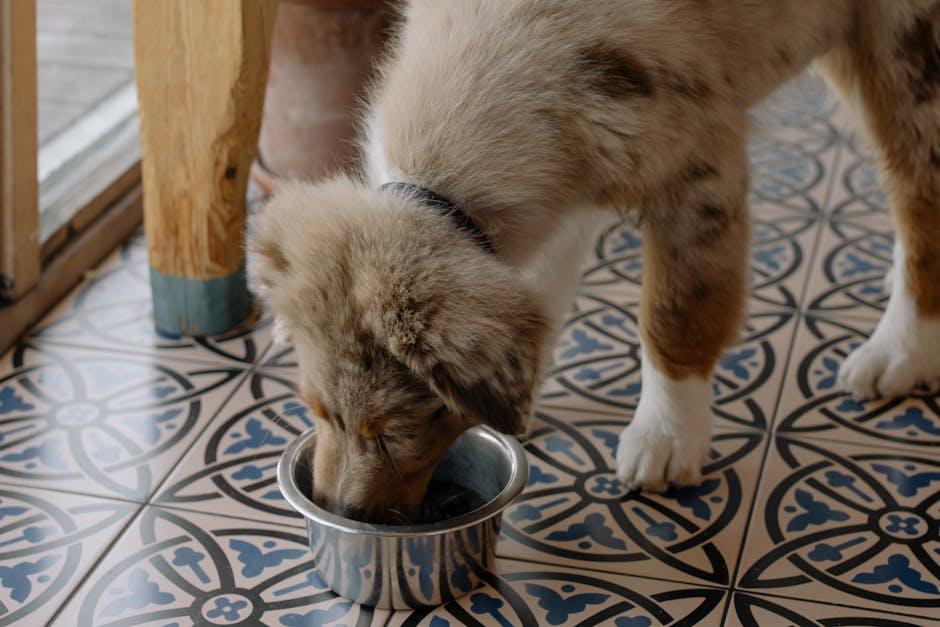Welcoming a new puppy into your home is a joyful and exciting experience, filled with playful moments and heartwarming snuggles. As you embark on this journey, one of the most important responsibilities you’ll undertake is ensuring your furry friend receives the proper nutrition they need to grow healthy and strong. Understanding the fundamentals of puppy feeding is crucial for setting the foundation for their lifelong well-being. In this article, we’ll guide you through the essential aspects of puppy feeding, offering practical tips and advice to help you nourish your new companion with love and care. Whether you’re a first-time pet parent or looking to refresh your knowledge, we’re here to support you in making informed choices that will keep your puppy’s tail wagging happily.
Choosing the Right Food for Your Puppy’s Nutritional Needs
Welcoming a new puppy into your home is an exciting adventure, and ensuring they receive the right nutrition is crucial for their development. Puppies require a balanced diet that supports their rapid growth, energy needs, and overall health. When selecting food, consider options specifically formulated for puppies, as these are designed to meet their unique nutritional requirements.
When evaluating puppy food, look for the following key components:
- High-quality protein: Essential for muscle development, make sure the food lists real meat, poultry, or fish as the primary ingredient.
- Balanced fats: Provide energy and support brain development. Omega-3 and Omega-6 fatty acids are particularly beneficial.
- Vitamins and minerals: Crucial for bone growth and immune system support. Calcium and phosphorus are especially important for healthy bone development.
It’s also important to consider the size and breed of your puppy. Small breeds may need food with higher calorie content per bite, while large breeds benefit from controlled calcium and phosphorus levels to avoid rapid growth that could stress developing bones. Always ensure fresh water is available, and consult your veterinarian for personalized advice, especially if your puppy has specific health concerns.

Establishing a Feeding Schedule to Promote Healthy Growth
Developing a structured meal routine for your puppy is key to supporting their growth and ensuring they receive the right nutrients at the right times. Puppies have specific dietary needs that vary as they grow, so it’s crucial to adjust their feeding schedule accordingly. Begin by feeding your puppy three to four times a day, gradually reducing to two meals as they approach adulthood. This helps maintain their energy levels and prevents overeating.
Here are some tips to help you establish an effective feeding schedule:
- Consistency is crucial: Try to feed your puppy at the same times each day to create a reliable routine.
- Portion control: Ensure you’re feeding the right amount based on your puppy’s age, weight, and breed. Consult your vet for specific recommendations.
- Monitor your puppy’s weight: Regularly check your puppy’s weight to ensure they are growing at a healthy rate.
- Adjust as needed: As your puppy grows, their nutritional needs will change. Be prepared to adjust their feeding schedule and portions.
By adhering to a consistent feeding schedule and keeping an eye on your puppy’s growth, you are setting the foundation for a healthy and happy life. Remember, every puppy is unique, so be attentive to their individual needs and consult with your veterinarian for personalized advice.

Understanding Portion Sizes to Prevent Overfeeding
Understanding how much to feed your puppy is crucial to ensuring they grow into a healthy adult dog. Puppies have different nutritional needs than adult dogs, and overfeeding can lead to obesity and other health issues. Here are some tips to help you navigate portion sizes effectively:
- Consult the packaging: Most dog food packages include a feeding chart based on your puppy’s age and weight. This is a great starting point to determine the appropriate portion size.
- Adjust for activity level: If your puppy is highly active, they may require more food than the average recommendation. Conversely, less active puppies may need smaller portions to avoid gaining excess weight.
- Use a measuring cup: It’s easy to overestimate when eyeballing food portions. Use a measuring cup to ensure you’re providing the correct amount.
Remember, every puppy is unique. Regularly monitor your puppy’s weight and adjust their food intake as needed. If you’re ever in doubt, consult with your veterinarian to tailor a feeding plan that suits your puppy’s individual needs.
















